Archived Newsletters
View our archived newsletters here: Archived Newsletters
View our archived newsletters here: Archived Newsletters
17-12-2024
Our December newsletter has been posted. To find a round-up of all our recent news, click this link.
You can subscribe to our newsletter in the footer of any page on MammalWeb.
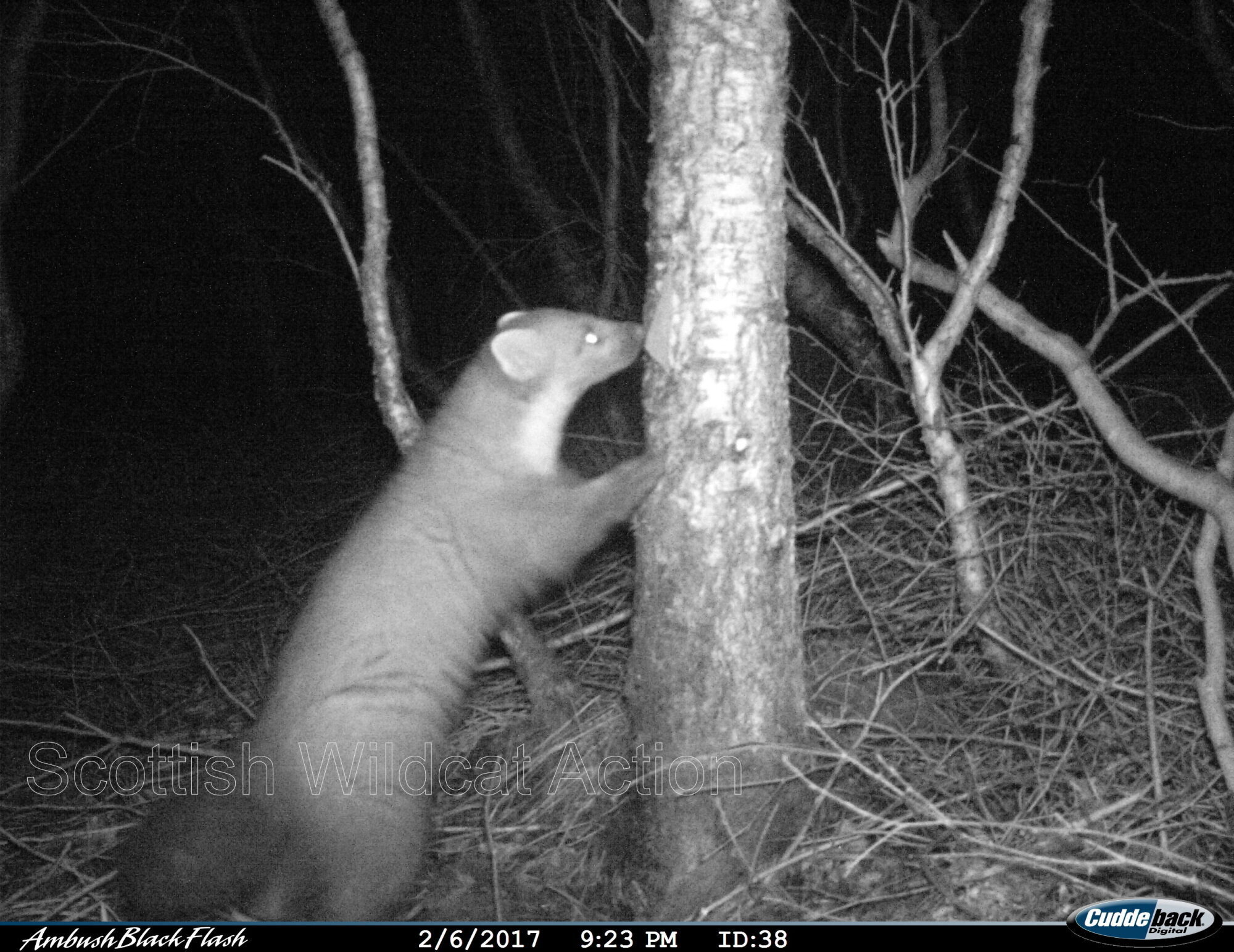
image credit: Scottish Wildcat Action
15-07-2024
Our July newsletter has been posted. To find a round-up of all our recent news, click this link. Check out some of the most liked recent images.
You can subscribe to our newsletter in the footer of any page on MammalWeb.
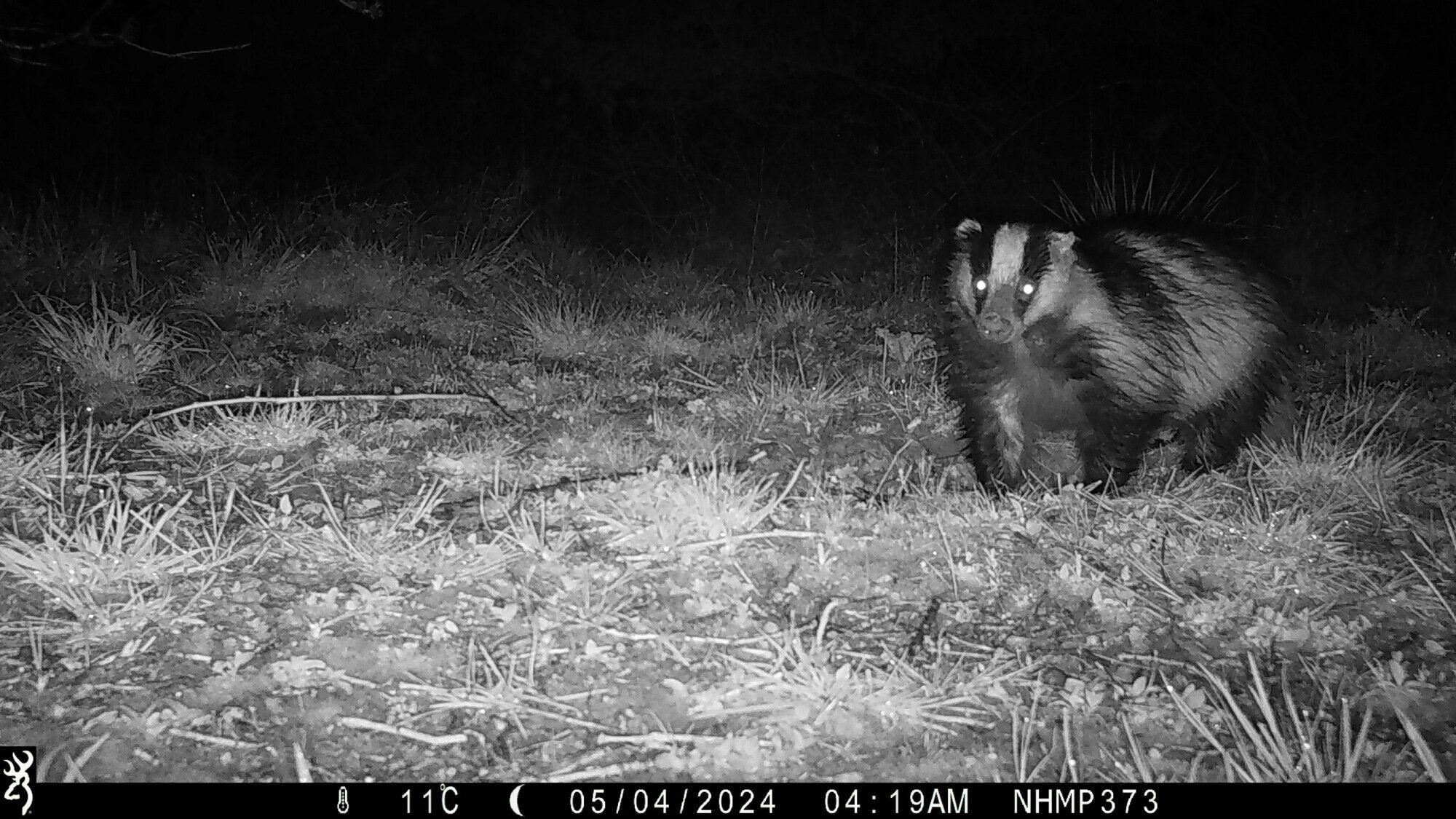
image credit: dwright / NHMP Warwickshire
09-04-2024
Our April newsletter has been posted. To find a round-up of all our recent news, click this link.
You can subscribe to our newsletter in the footer of any page on MammalWeb.
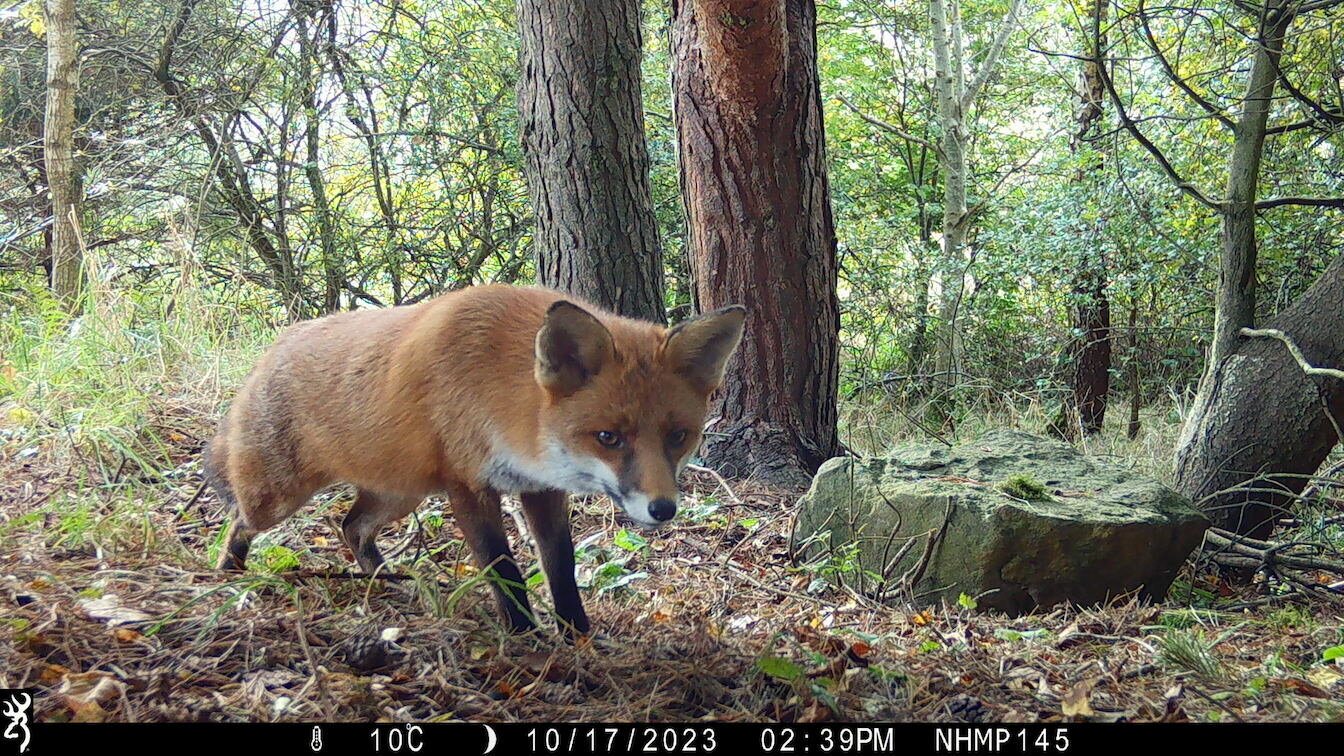
image credit: TCV Scotland / NHMP
09-02-2024
Our February newsletter has been posted. To find a round-up of all our recent news, click this link.
You can subscribe to our newsletter in the footer of any page on MammalWeb.
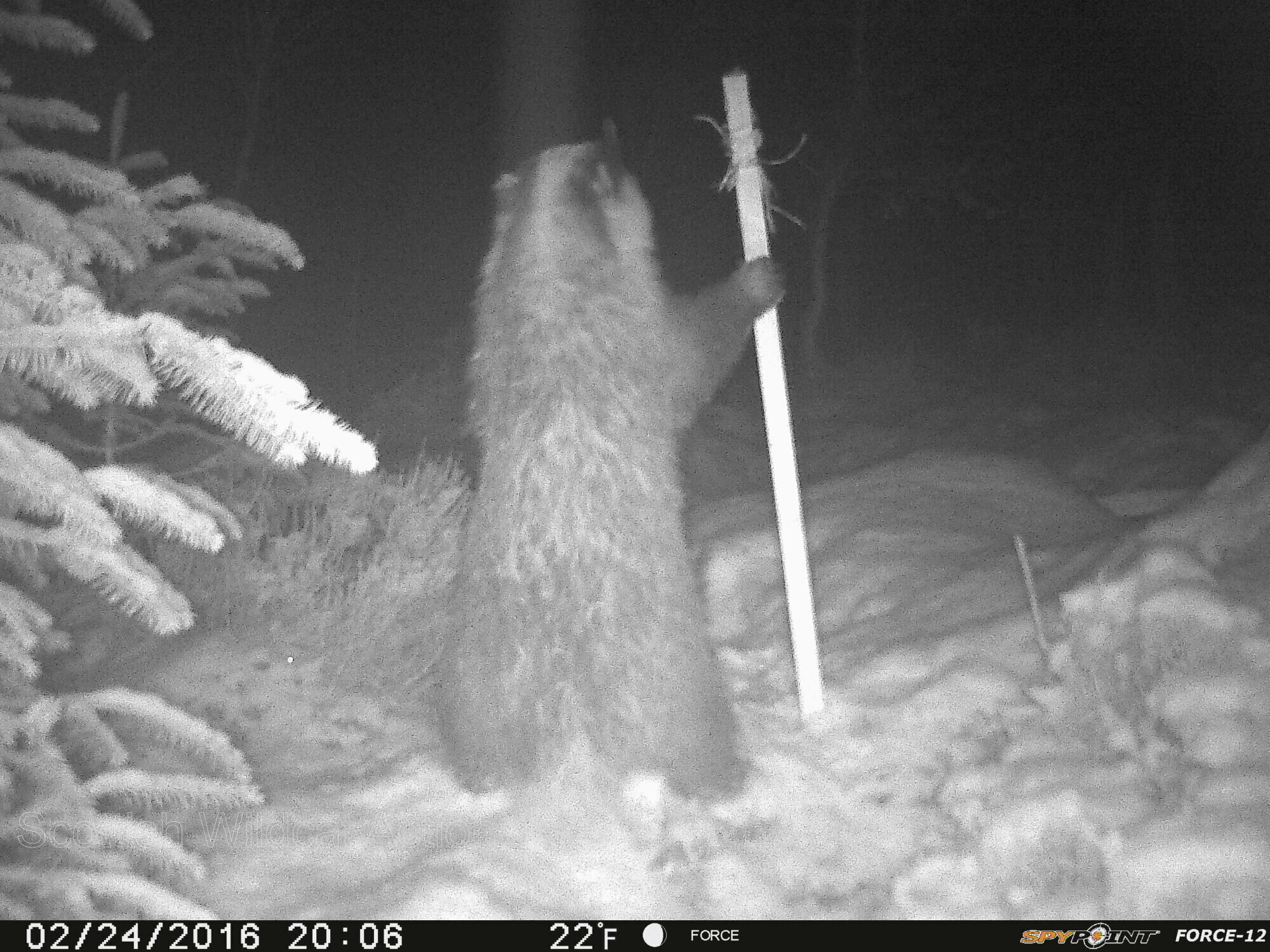
image credit: Scottish Wildcat Action
01-12-2023
As of December 2023, we have a new approach to communicating news. To find a round-up of all our recent news, click this link.
You can subscribe to our newsletter in the footer of any page on MammalWeb.
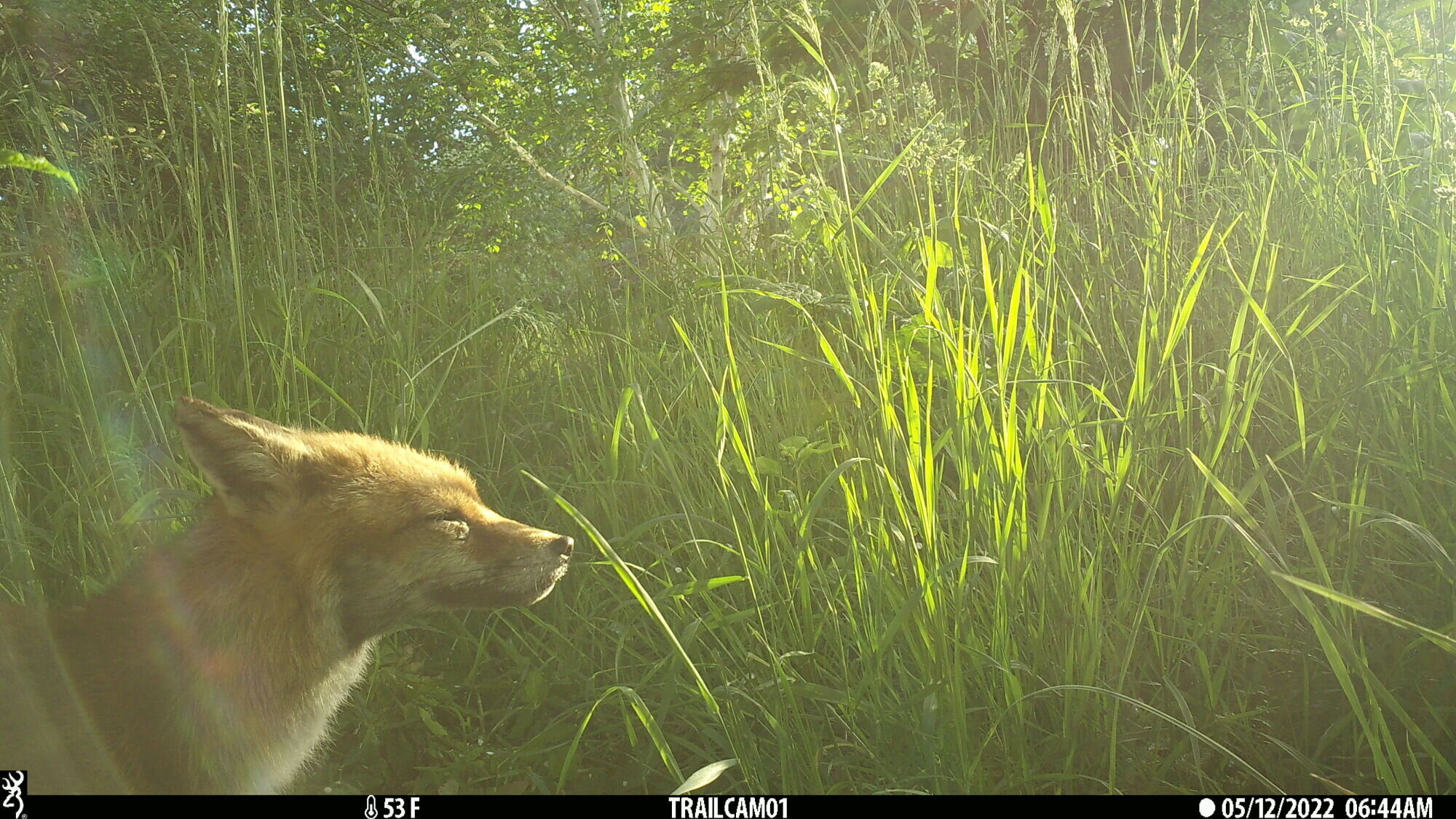
image credit: zladders
15-04-2022
Forest of Dean Pine Marten Easter Competition
Our Forest of Dean Pine Marten project is nearly complete but we need some extra help to get us to the finish line. In order to thank everyone who has participated in the project so far, and get those final classifications in, we are running a special Easter competition. For every classification submitted to the Forest of Dean Pine Marten Project from April 15th to the 1st of May you will receive a ticket to be entered into a prize draw. The lucky winner will receive a new camera trap and a runner up will win a copy of the excellent book ‘Pine Martens’ by Johnny Birks.
To be in with a chance to win you need to have an account registered on MammalWeb, then go to the ‘Forest of Dean Pine martens’ project, either via our ‘Projects’ page or select it from the drop-down menu on your Spotter page and start classifying. You can choose to classify photos, videos or a mix of both from this project. If you have not classified from this project before, you will notice it is a little different to other projects on MammalWeb as, not only are we asking you to identify the species you can see, but also whether you can identify different individual pine martens. This can be tricky, but is possible as each pine marten has unique markings on its ‘bib’ (the area of creamy coloured fur on a marten’s chest). Look carefully and you will see the edge of the bibs can be very uneven, and some martens have patches of dark fur within their bib. When spotting for this project you will see a list of different ID codes (e.g. FD03) for different animals known to be in the study area.
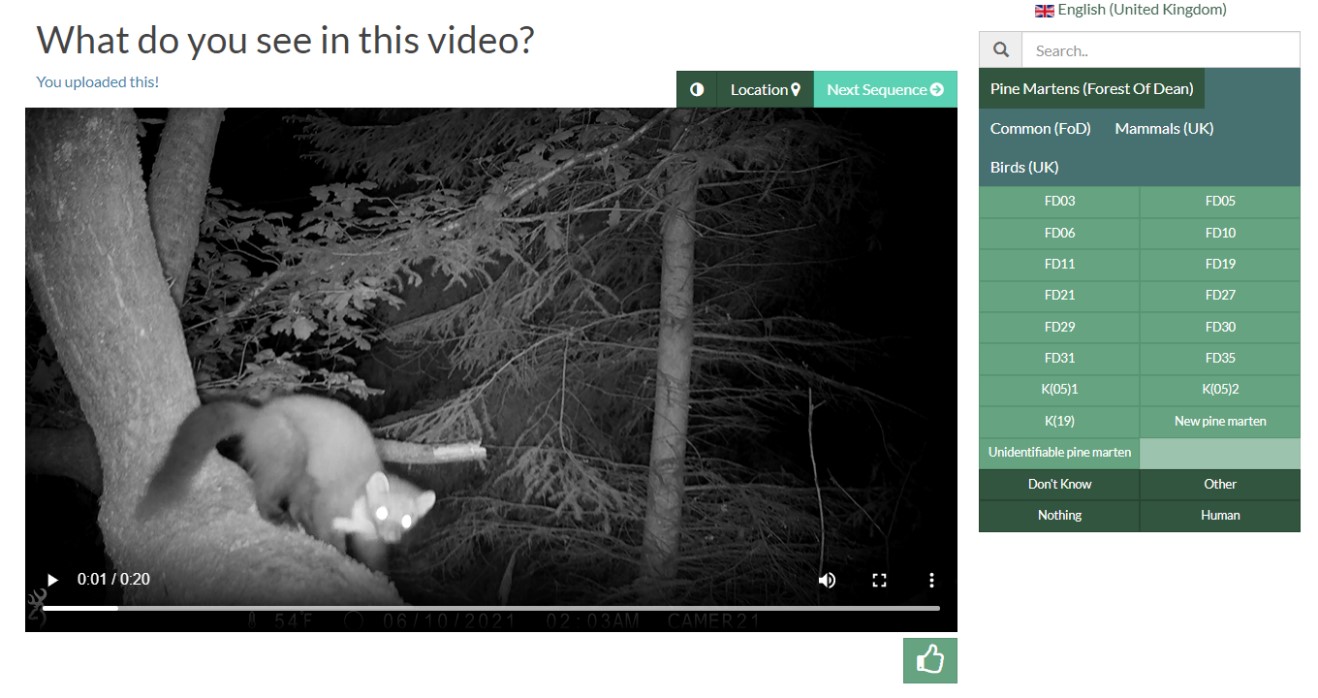
Clicking on one of these IDs will bring up more information and other images of that animal to help you with your classification.
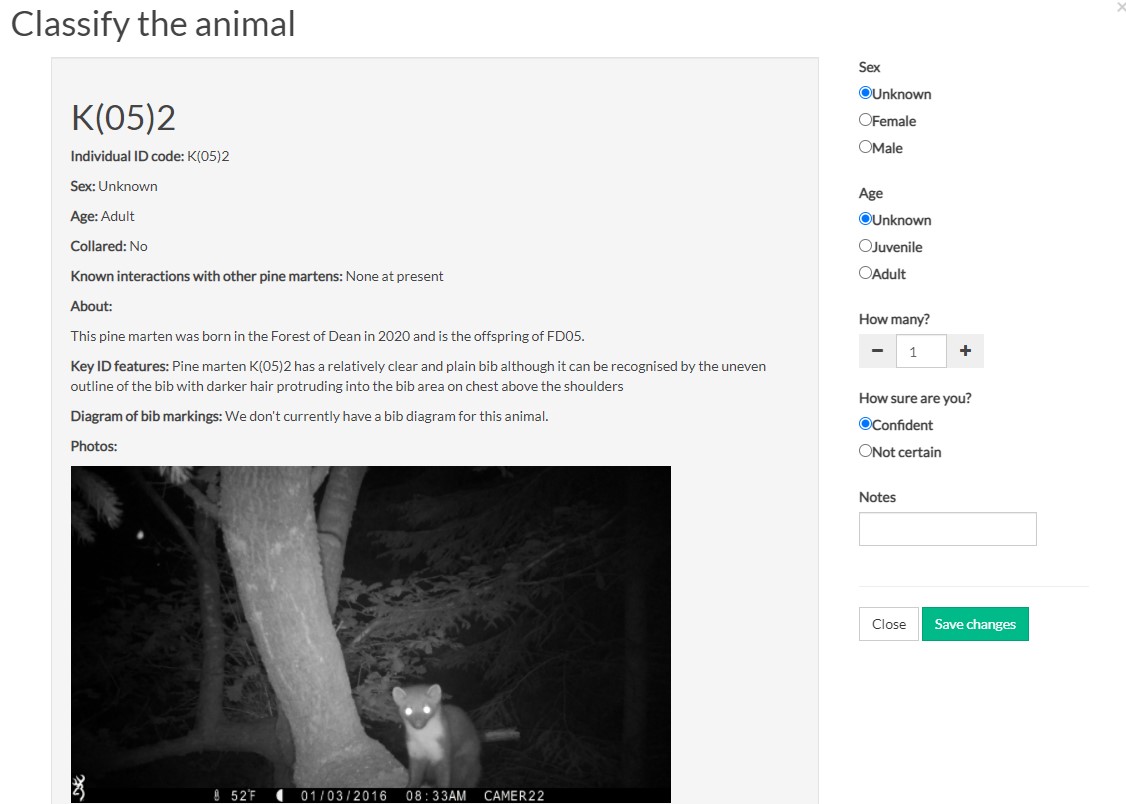
Trying to ID a pine marten to individual level takes concentration and can be time consuming, therefore for each classification you submit that contains an individual ID, you will receive a bonus ticket for the prize draw. For more information and tips on pine marten classification visit the project page or see our pdf guide.
If you believe you have found a pine marten that is not one the ID options available please classify it as a ‘New pine marten’. If you believe the footage is not possible to ID to individual, e.g. you can’t see the bib markings, please classify it as ‘Unidentifiable pine marten’ but if you are able to tell if it is male or female please still add that information. If you have narrowed it down to a couple of individuals but are unsure you can always select the individual you think is most likely but add others you think it might be in the notes box.
We will announce the winner on our social media accounts (Facebook, Instagram and Twitter) and in our May newsletter, if you have any questions, please contact us at This email address is being protected from spambots. You need JavaScript enabled to view it.. Best of luck - and get spotting!
18-12-2020
You're probably familiar with classifying photographs of roe deer on MammalWeb, but over the Christmas period look out for the festive version of this species - Rudolph the red-nosed roe deer! We've hidden 10 photos like the one below in the MammalWeb Britain project. If you find one whilst classifying, then take a screenshot of it and either email it to us at This email address is being protected from spambots. You need JavaScript enabled to view it. or message us on Facebook, Twitter or Instagram. Your name will then go into a prize draw to win a camera trap! We'll announce the winner on the 12th day of Christmas (5th January) on social media, as well as in our next newsletter. Good luck!
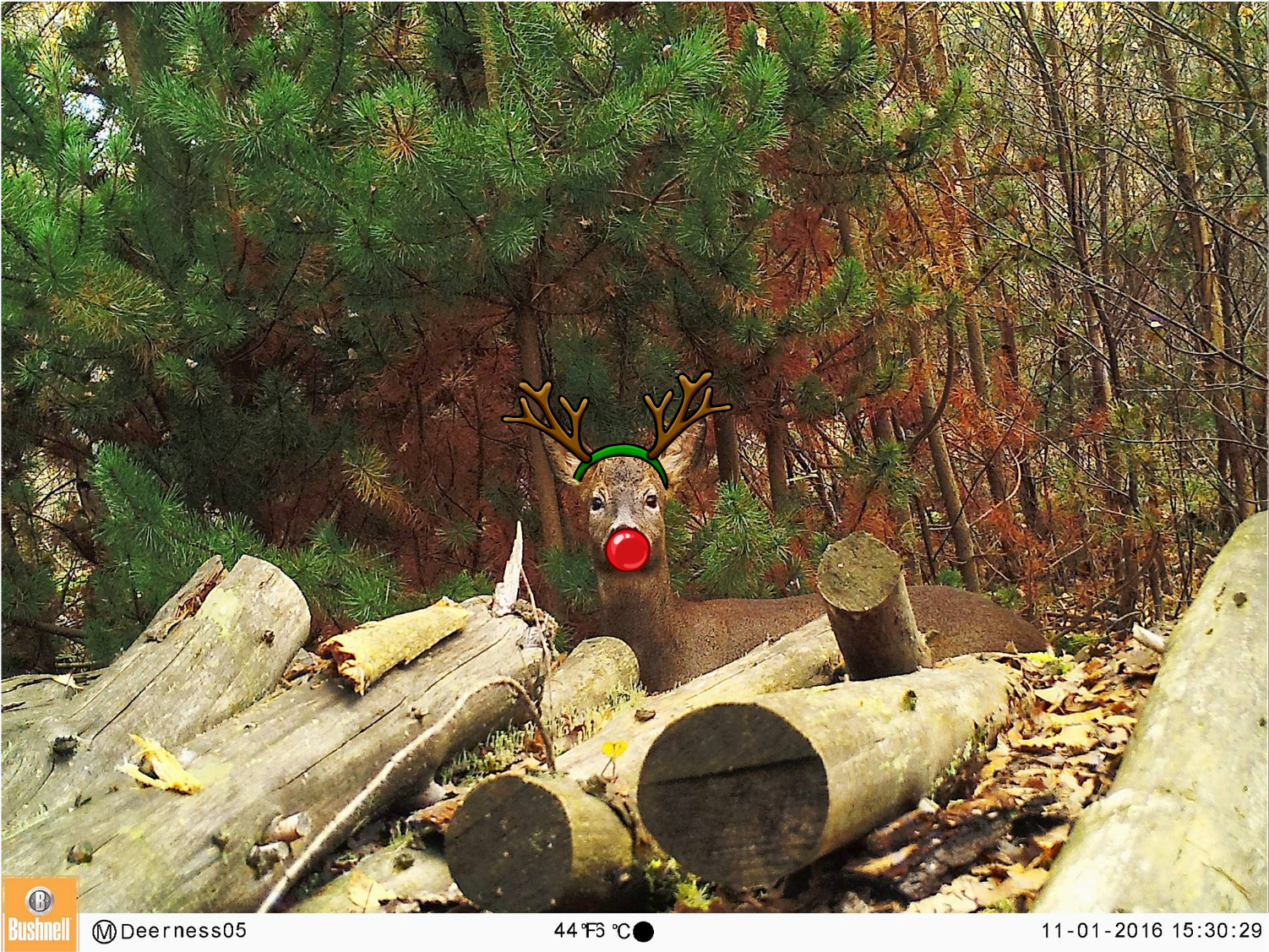
07-12-2020
Some of you might have noticed that we have changed the name of MammalWeb UK to MammalWeb Britain. This reflects an exciting change, as we welcome MammalNet Ireland to the group of MammalNet projects. MammalNet Ireland will be recruiting trappers and spotters from across the whole island of Ireland. Trappers from Northern Ireland will, thus, be contributing data to that project, rather than to a UK-wide project. It is fitting, therefore, that we refocus our longest-running project on England, Scotland and Wales.
19-08-2020
It is a shamefully long time since we last posted news on this page. In our defence, (a) if you want more regular news, the best way to get that is to subscribe to our monthly newsletters; and (b) this global pandemic is playing with everyone's lives - and the MammalWeb team are no exceptions.
Rather than post separate updates for the Spotters' League from recent months, we thought it would be interesting to present a single table, showing the league rankings over the past 4 half-month periods (see below). Congratulations to everyone who made it in to the top-20 during one of those periods!
The table emphasises the high turnover in the League. For example, it shows that, of those who have made it in to the top-20 in one or more of the 4 periods, about two-thirds have appeared on only one occasion. It also shows that we have some very consistent contributors. Particular congratulations, then, to PetaSams, Florian, AKStenhouse, sammykwild, vivcoy and Gven, all of whom have made it on to each of the 4 lists shown! And commiserations to PetaSams who, despite being the top contributor over the entire 2-month period, has consistently been denied the top spot!
As always, thanks to all contributors - we hope you are able to keep up the good work!
| Ranking | Late June Spotters | Early July Spotters | Late July Spotters | Early August Spotters |
|---|---|---|---|---|
| 1 | Florian | jojoswift | vkent | jack.white |
| 2 | PetaSams | PetaSams | Deacon | PetaSams |
| 3 | Sprocket46 | Florian | jojoswift | milfo |
| 4 | Footballmia | Grannymeg | PetaSams | Florian |
| 5 | Wild Outlander | Sprocket46 | milfo | jo.davenport |
| 6 | Gven | sammykwild | Florian | vine cottage |
| 7 | Joanna Gornia | Deacon | stuarthalewood | stuarthalewood |
| 8 | poofinder | trumpetgirl | Hannah Coburn | jojoswift |
| 9 | sammykwild | Magma | nmtoken | JordanBrandrick1 |
| 10 | Whitwam | vivcoy | trumpetgirl | nmtoken |
| 11 | trumpetgirl | AKStenhouse | AKStenhouse | Ehare |
| 12 | emmust | Bob Philpott | Edward_Hart | AKStenhouse |
| 13 | Rattus | Wild Outlander | Rattus | vivcoy |
| 14 | Dick Green | bethsmith | krholmes | jd12006 |
| 15 | vivcoy | Rattus | Sprocket46 | Bob Philpott |
| 16 | AKStenhouse | stuarthalewood | sammykwild | Gven |
| 17 | Luko | WinnieC | Bob Philpott | Deacon |
| 18 | diana crane | EllaStewart | vivcoy | pekka |
| 19 | JPSpot | brinmar2000 | DurhamMonitor | Louise Bull |
| 20 | marcos | Gven | Gven | sammykwild |